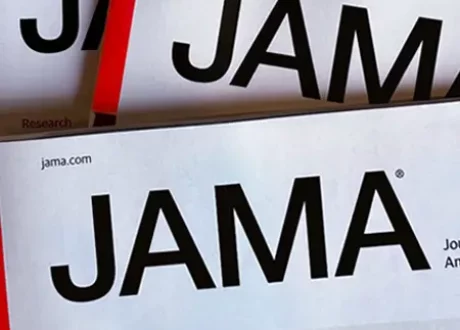Podcast: Play in new window | Download
“This learning material is sourced from Emergency Medicine Cases and has been published here with permission as per creative commons copyright”
Topics in this EM Quick Hits podcast
Anand Swaminathan on endovascular therapy for large vessel occlusion ischemic stroke (0:38)
Sarah Reid on intussusception clinical pearls and pitfalls (8:45)
Andrew Petrosoniak on 5 tips on management of stable penetrating trauma patient (15:49)
Peter Toth on slit lamp hack for skin foreign body removal (23:31)
Nour Khatib & Jonathan Wallace on CT radiation risk (27:43)
Matt Poyner on the importance of an emergency fund (34:21)
Podcast production, editing and sound design by Anton Helman
Podcast content, written summary & blog post by Alex Chan, edited by Anton Helman
Cite this podcast as: Helman, A. Swaminathan, A. Reid, S. Petrosoniak, A. Toth,, P. Khatib, N. Wallace, J. Poyner, M. EM Quick Hits 49 – Stroke Management Update, Intussusception, 5 Penetrating Trauma Tips, Foreign Body Hack, Radiation Risk, Emergency Fund. June, 2023. https://emergencymedicinecases.com/em-quick-hits-june-2023/. Accessed June 7, 2023.
The eligibility criteria of endovascular therapy for large vessel strokes may be expanding in the future
- Current guidelines indicate endovascular therapy (EVT) for large vessel occlusion strokes occurring within 24 hours of presentation with neuroimaging demonstrating a small ischemic core with a viable penumbra
- The ANGEL-ASPECT and SELECT2 RCTs published in 2023 suggested that patients presenting with large infarcted cores receiving EVT were found to have superior neurologic outcomes compared to medical management alone
- In the SELECT Late retrospective study, there additionally appeared to be a benefit of neurologic outcomes for patients receiving EVT despite presenting with large vessel strokes beyond 24 hours of “last known well”
- Although the mentioned studies suggest benefit for EVT beyond our current eligibility criteria, further studies are needed before applying the evidence to clinical practices as SELECT was a retrospective study and biases and limitations were present
Ep 120 ED Stroke Management in the Age of Endovascular Therapy
Diagnosis and management of intussusception
- Intussusception involves the invagination of bowel into the adjoining segment and is one of the most common pediatric abdominal emergencies that recurs at a rate of 10%
- Intussusception typically presents with intermittent episodes of severe abdominal pain/crying episodes every 15-20 mins with intercurrent periods of wellness, slight discomfort or lethargy
- However, the presentation of intussusception is variable and must be considered in patients presenting with:
- The classic triad of intermittent abdominal pain, vomiting, and bloody stools (currant jelly stool is rare and a late finding)
- Isolated altered LOA including recurrent crying episodes
- Isolated bilious or nonbilious vomiting
- Isolated atypical patterns of abdominal pain
- Ultrasound is the preferred diagnostic tool for intussusception:
- Radiology department ultrasound has a sensitivity and specificity of 100% with the classic finding of a target or bull’s eye lesion
- PoCUS has a sensitivity and specificity >90%, and may be a valuable tool to decrease ED length of stay
- Abdominal X-ray is much less sensitive, but may identify complications such as obstruction or perforation
- The management of intussusception includes:
- IV maintenance and bolus fluids to treat hypotension or shock, early analgesia
- Empiric antibiotics if perforation/peritonitis are suspected
- Consultation with Pediatric Radiology and/or Pediatric Surgery for air enema reduction under fluoroscopy or ultrasound guidance
- Laparotomy is considered if reduction is unsuccessful
- Newer data suggests it is safe and reasonable to discharge patients post reduction of intussusception if they are observed to be stable in the ED for 4 hours
5 Tips for the management of penetrating trauma in community hospitals
- Call for 2 units of uncrossed packed red blood cells as soon as you are made aware of an incoming penetrating trauma patient
- Once the patient arrives, immediately sit the patient upright and raise their arms to inspect for axillary and posterior thoracic wounds
- Prioritize PoCUS of the pericardium to identify pericardial effusion, followed by the lung to identify pneumothorax, before an abdominal FAST exam
- Make metallic markers on each wound with staples, as this will allow you to have a better understanding of the trajectory of the penetrating trauma(s) on CT
- The bullet rule for gun shot wounds: the sum of the number of bullet wounds and actual bullets seen on imaging should always be an even number; an odd number implies that you are either missing wounds, or bullets!
- When imaging, ensure to image all of the chest, abdomen, and pelvis for any thoracolumbar penetrating trauma
- Call your regional trauma centre early to have them involved in the management
Episode 118 – Trauma: The First and Last 15 minutes Part 1
Episode 119 – Trauma: The First and Last 15 minutes Part 2
CritCases 3 – GSW to the Chest
Slit lamp skin foreign body removal hack (Best of University of Toronto EM)

- For patients whom you suspect foreign bodies that are difficult to see clearly with the naked eye, the slit lamp can be a helpful tool to explore wounds and remove foreign bodies under greater magnification
- An assistant may be required to stabilize the patient’s hand or foot in ideal position on the slit lamp
- A 25 gauge needle that is recommended for corneal foreign bodies may be helpful for foreign body removal of the skin as well

Magnified skin foreign body under slit lamp examination with 25 gauge needle for removal
The downstream risks of CT radiation are under-appreciated in practice
- Up to 2% of all cancers in the United States are estimated to be iatrogenic and caused by radiation associated with use of CT scans, and the use of CT scans has risen considerably over the last 3 decades
- https://www.xrayrisk.com/ is a useful tool that can provide individualized cancer risk statistics for patients by age, gender and type of CT scan, and can aid in shared decision making
- Clinicians should weigh the risk-benefit ratio of clinical imaging and weigh factors such as age, presentation, and patient preferences when ordering medical imaging
Episode 82 – Emergency Radiology Controversies
Having an emergency fund is a critical part of financial planning and often ignored
- Emergency funds are important to protect us against expenses for unpredictable circumstances such as illness, property damage, etc.
- Generally, it is recommended to have 2-6 months of your basic living expenses set up in a separate high-interest savings account for your emergency fund











